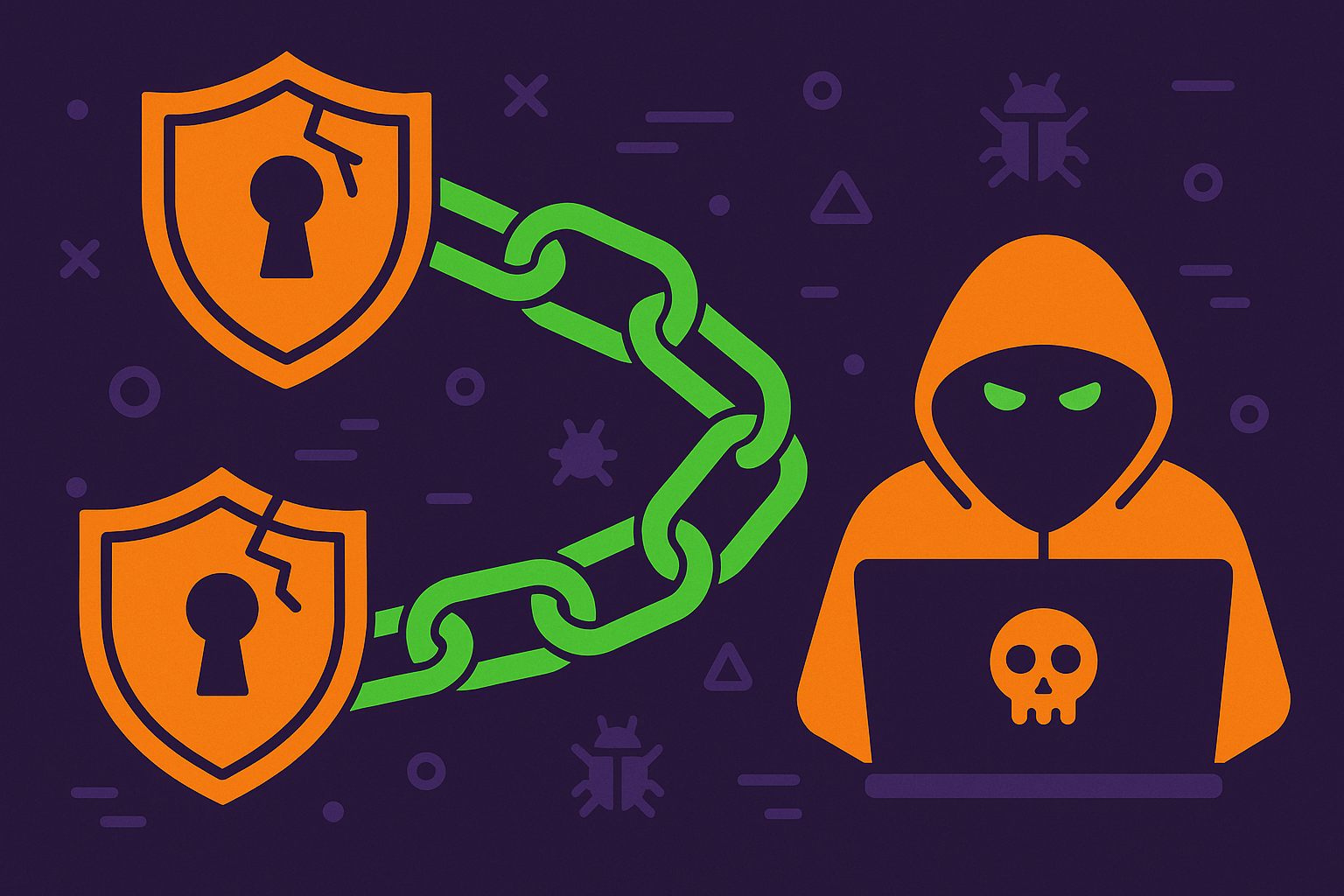In cybersecurity, no single crack in the wall is usually enough to bring an organization down. Real attackers don’t stop at one weak point; they look for ways to chain vulnerabilities together, linking minor oversights into a path that leads to serious compromise.
This is where penetration testing separates itself from simple vulnerability scanning. A scan might tell you, “Here are 50 issues.” But a penetration test shows you, “Here’s how an attacker could combine three of those issues to steal customer data, escalate privileges, or move laterally into your crown-jewel systems.”
Understanding vulnerability chaining and its significance can alter the way executives approach their security investments.
What Is Vulnerability Chaining?
Vulnerability chaining is the practice of taking multiple, often low- to medium-severity issues and combining them into a single, high-impact attack path.
Think of it as puzzle pieces:
- Individually, each flaw seems manageable or even insignificant.
- Together, they create a complete picture of compromise.
For example:
- An internal web application has default credentials that allow limited access.
- Once inside, testers find a directory traversal flaw to access configuration files.
- Those files contain hard-coded API keys, which unlock access to a production database.
- From the database, attackers dump sensitive customer information.
Most of these vulnerabilities by themselves wouldn’t necessarily trigger a panic. But chained together, they represent a breach scenario that could cripple an organization.
Why Vulnerability Scans Fall Short
Automated scanners are excellent at identifying known weaknesses, misconfigurations, and outdated software. But they analyze issues in isolation.
A scanner might tell you:
- “This system uses default credentials.”
- “This web application has a directory traversal issue.”
- “This database has weak encryption.”
What it won’t tell you is that an attacker could use all three to exfiltrate millions of records in under an hour.
This is the critical gap: scans generate lists, while pen tests generate context.
How Pen Testers Chain Vulnerabilities in Practice
During a penetration test, skilled testers think like adversaries. They:
- Prioritize low-hanging fruit. A minor misconfiguration might be the first foothold.
- Look for pivot points. Can a small win open access to more valuable systems?
- Escalate privileges. Each step is designed to expand control, moving from user to admin to domain-wide dominance.
- Test defense response. Chaining often reveals whether security monitoring tools detect unusual patterns or allow lateral movement to go unnoticed.
This is the type of real-world insight that a static scan cannot capture.
Why Executives Should Care
For leadership, the lesson is clear: risk doesn’t live in isolated findings. It lives in how attackers exploit them together.
Here’s why pen testing is worth the investment:
- Actionable risk clarity. Instead of a 200-page list of vulnerabilities, you get a story of how attackers could actually break in.
- Resource prioritization. Chains highlight which vulnerabilities to fix first—the ones that attackers can realistically combine for maximum impact.
- Regulatory alignment. Many frameworks (PCI DSS, HIPAA, ISO 27001) require proof of real-world testing beyond scanning.
- Strategic decision-making. The board and C-suite can make informed investments because they see risk in context, not in isolation.
Bottom Line: Real Attacks Don’t Happen in Isolation
Attackers don’t care how a vulnerability is labeled in your scanner report. They care about how it can help them get to the next step. That’s why chaining vulnerabilities is one of the most effective and dangerous tactics in their playbook.
Penetration testing exists to simulate that reality. It shows you not just what’s vulnerable, but how those vulnerabilities connect, what an attacker could actually achieve, and how you can stop them.
When you’re deciding between vulnerability scans and penetration testing, remember this: lists don’t get breached, systems do. And systems fail when weaknesses are combined.
MainNerve‘s testers are skilled at chaining vulnerabilities together to create unique exploits. Contact us today if you’re ready for a real-world test.



